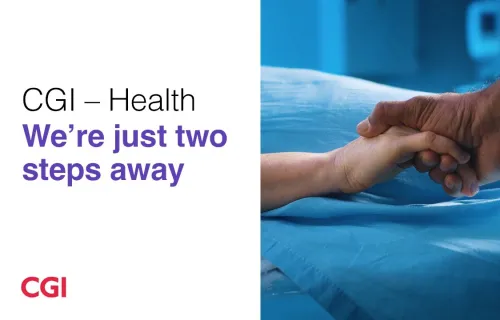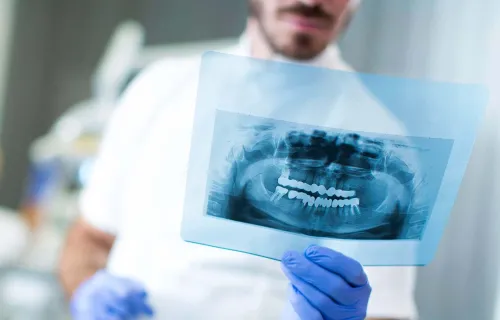We live in an interconnected world where seamless functionality is simply expected. I can send an email from my Gmail account to someone's Yahoo address without a second thought. I text from Android to iPhone across mobile carriers without hesitation. I withdraw cash from an ATM that isn’t my bank’s or seamlessly connect to different Wi-Fi networks, all without concern.
However, in healthcare, this seamless interoperability is often far from reality. Healthcare systems frequently struggle to share critical patient data across different platforms and organizations due to varying standards, technologies, connectivity issues, and legacy infrastructure.
At CGI, we recognize that achieving true interoperability is essential for enhancing care coordination, reducing medical errors, and improving patient outcomes.
Insights from IHE Connectathon, ViVE, and HIMSS 2025
Recent industry events such as the IHE Connectathon, ViVE, and HIMSS 2025 have reinforced the urgency and complexity of achieving interoperability. These conferences showcased the latest advancements, highlighted persistent barriers, and fostered discussions among key stakeholders. Some significant emerging themes included:
- The shift toward federated data models: Rather than relying on centralized repositories, federated models enable organizations to securely share data while retaining full control over their information.
- The role of AI and machine learning (ML) in data standardization: Many organizations struggle with data harmonization, but AI-driven solutions are helping to streamline this process, making integration smoother.
- Patient-centric interoperability: There is growing recognition that patients should have more direct control over their health data, driving efforts to implement patient-accessible platforms.
- The expansion of FHIR and API-driven integration: The adoption of HL7 FHIR and API-based frameworks is accelerating, enabling more seamless connections between disparate systems.
The role of data standards in healthcare interoperability
Data interoperability in healthcare relies on established data standards that ensure consistency, accuracy, and usability across different systems. Some of the most widely recognized standards include:
- Health level seven (HL7)
- Fast healthcare interoperability resources (FHIR)
- Systematized nomenclature of medicine - clinical terms (SNOMED CT)
- Logical observation identifiers names and codes (LOINC)
- Diagnostic image exchange solutions (DICOM)
Four principles for driving interoperability
Interoperability in healthcare involves the secure and efficient exchange of patient information among diverse systems and stakeholders. CGI approaches this challenge by focusing on several key principles:
- Data ownership and control: Healthcare organizations must maintain full ownership and control of their data. Our solutions enable data sharing while maintaining control, ensuring data owners dictate access and usage policies.
- Standards-based integration: We use international standards such as HL7 and FHIR to ensure our solutions are compatible with a wide range of systems, facilitating seamless data exchange.
- Security and privacy: Protecting patient information is paramount. Our interoperability solutions incorporate advanced security measures, including encryption and blockchain technologies, to safeguard data during transit and storage. One of our flagship solutions, CGI TrustedFabric, enhances existing technical infrastructures by enabling data sharing through a secure, blockchain-based cloud solution.
- Collaborative partnerships: Interoperability extends beyond technology. By fostering collaboration among public, private, and third-sector organizations, we aim to create a holistic healthcare ecosystem that benefits all stakeholders.
Tangible examples of healthcare interoperability outcomes
The best way to reflect upon these standards, themes, and principles is to review tangible ways that healthcare organizations are achieving interoperability results. The following are just a few examples of how organizations are advancing their initiatives.
Partnering with Delta Wellbeing in the UK
In West Wales, we partnered with Delta Wellbeing to develop a digital platform that integrates health and social care services. This initiative supports individuals in their homes, promoting independence and reducing the demand for acute health services. By integrating technologies such as telecare and remote patient management, the platform provides a holistic view of patient care, facilitating proactive interventions. This partnership underscores the importance of collaboration between technology providers and healthcare organizations to achieve meaningful transformation and deliver improved health and care outcomes.
Diagnostic image exchange solutions
Medical imaging is central to accurate diagnoses, yet sharing these images across different systems can be challenging. We implemented standards-based solutions that enable secure sharing of diagnostic images through vendor neutral archives (VNAs). These solutions facilitate access to images across various healthcare organizations, reducing the need for repeat scans and accelerating diagnosis times.
Having expertise in DICOM and VNA technologies was instrumental in transforming image access and workflow, allowing radiologists to collaborate more effectively.
Enhancing health information exchange in Germany
We played a pivotal role in advancing health information exchange in Germany by developing the Telematics Infrastructure (TI) Gateway. This platform is a secure, centralized hub that manages access to the nation's healthcare network, enabling seamless data exchange among healthcare providers, pharmacies, and other stakeholders.
The TI Gateway exemplifies how centralized access control and secure communication channels can improve patient care by providing timely access to critical health information.
Navigate your interoperability journey
Achieving interoperability in healthcare is a multifaceted endeavor that requires a blend of advanced technology, adherence to international standards, robust security measures, and collaborative partnerships. The insights gained from industry-leading events such as the IHE Connectathon, ViVE, and HIMSS 2025 further emphasize the importance of investing in scalable, secure, and patient-centered interoperability solutions.
I’d welcome the opportunity to discuss interoperability solutions to not only enhance data sharing but also improve patient care and operational efficiency.Contact me to discuss your journey and how to move forward.






